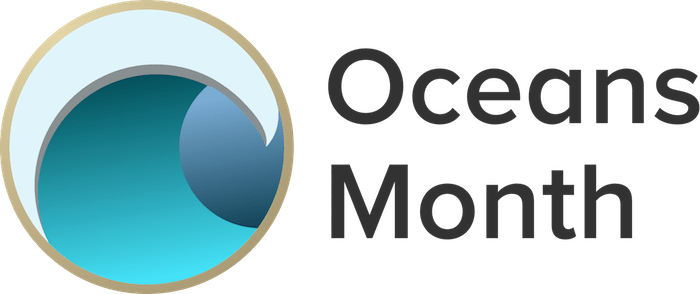 This is a part of Oceans Month, where we explore the science throughout the world’s oceans and meet the people who study them. Want to dive in with us? Find all of our stories here.
This is a part of Oceans Month, where we explore the science throughout the world’s oceans and meet the people who study them. Want to dive in with us? Find all of our stories here.
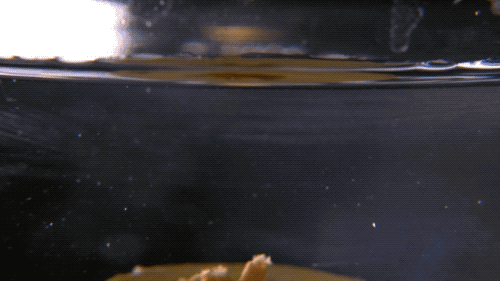
Meet “Baby Groot.” He’s a tiny settled coral named after the character from Guardians of the Galaxy. Spawned from coral in Key Largo, Florida, he has been slowly growing on a tile disc for about nine years. A team of biologists regularly examine the color of his tissue, the number of polyps, and any signs of encrusting along the settlement—a good indication of growth.
“He looks really, really good right now,” Kimberly Stone says. “He looks beautiful today, actually.”
And when he’s big and healthy enough, he’ll eventually be nudged out in the big, wide ocean.
[Take a look back in time by examining x-ray images of the insides of corals.]
Baby Groot is one of the corals grown in a lab at Georgia Aquarium in Atlanta, Georgia. As curator of fish and invertebrates, Stone not only helps craft galleries of sweeping habitats akin to the sea floor, but also heads up the coral propagation and restoration efforts at the aquarium. Currently, there are around 550 reef-building corals in oceans worldwide—a number of which are at risk of bleaching. Stone and her team bring in their years of practice working with marine habitats to cultivate and care for developing corals in the lab and transplant them back into reefs in the wild.
“I certainly think it’s an uphill battle, but it’s a battle that I think we have to fight for them,” Stone says. “They need our help.”
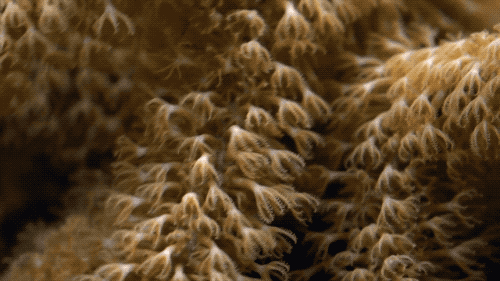
When visitors at Georgia Aquarium gaze upon the diverse array of colorful corals, Stone says many mistake the often stationary specimens for beautiful rocks. But corals are actually living animals—they belong to Cnidaria, the same group as jellyfish. Tucked within their tissues are photosynthetic algae cells, called zooxanthellae. The two have an important symbiotic relationship, explains Stone, with the coral providing a home for the zooxanthellae, and the cells repaying by providing essential nutrients and giving color to the coral (making the plant-like alien Baby Groot an appropriate namesake).
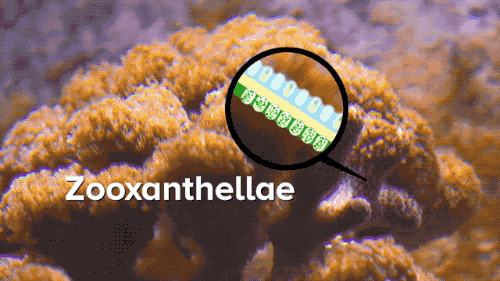
But unfortunately, there are many threats that strain this relationship. Ocean acidity, sea level rise, and particularly increased water temperatures not only affect the health of the coral, but affect the health of the zooxanthellae, Stone says. As the zooxanthellae gets stressed, it leaves the tissue and the coral begins to pale—what we know as coral bleaching.
[This company is shrinking the museum to an accessible, bite-sized learning experience.]
“The coral can survive for a short amount of time without the zooxanthellae and can come back if it’s able to reabsorb zooxanthellae quickly, but honestly, the animal has only a few days to a couple weeks in order for that to happen,” she says. “If it doesn’t happen, then, unfortunately, the coral will actually die.”
In addition to environmental pressures, corals in the wild have a hard time reproducing because of the distance between colonies, Stone says. Like matchmakers, the researchers will help the corals “find each other,” Stone says. In fact, Georgia Aquarium partnered up with the Coral Restoration Foundation to create an underwater nursery at the bottom of the Florida Keys.
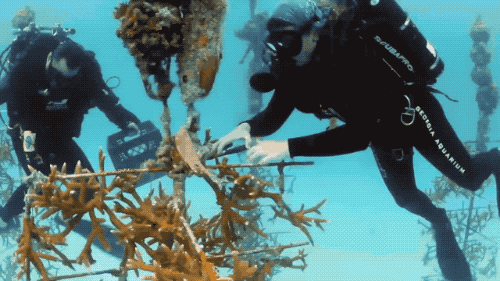
Corals have a unique reproduction cycle. Each species is dependent on different natural cues to release eggs and sperm, such as the lunar cycle, temperature, and tides. The team dives into the reef, collects the gametes, and separates the sperm and egg (to arrange the genetic makeup of the offspring and boost the currently low genetic diversity among individuals within populations of coral species). Then, they combine the eggs and the sperm to produce a free-living planula, or larvae, and place them on the tile discs to grow. After developing for months, up to years, and receiving zooxanthellae from the researchers, the lab-grown corals are taken into the ocean and dispersed on the reef.
The researchers are trying to cultivate a large, genetically diverse population of certain species, in hopes that the corals will eventually reproduce and thrive on their own. When that’s accomplished, “we’ll just sit back and be able to just dive and enjoy watching and observing versus helping,” says Stone.
But until then, Stone and her team at Georgia Aquarium will continue to lend a hand—growing these corals into a flourishing garden.
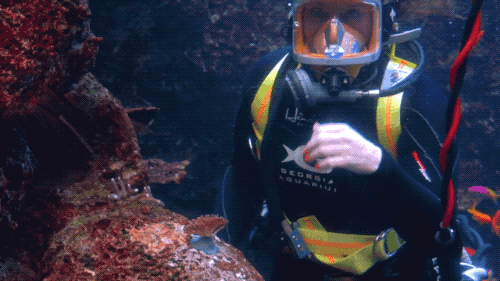
Credits
Produced by Christian Baker
Article by Lauren J. Young
Music by Audio Network
Additional footage courtesy Georgia Aquarium and Prelinger Archive
Meet the Producers and Host
About Luke Groskin
@lgroskinLuke Groskin is Science Friday’s video producer. He’s on a mission to make you love spiders and other odd creatures.
About Lauren J. Young
@laurenjyoung617Lauren J. Young was Science Friday’s digital producer. When she’s not shelving books as a library assistant, she’s adding to her impressive Pez dispenser collection.
